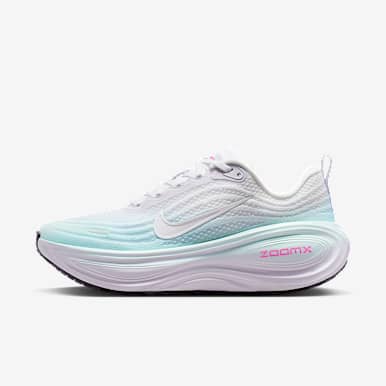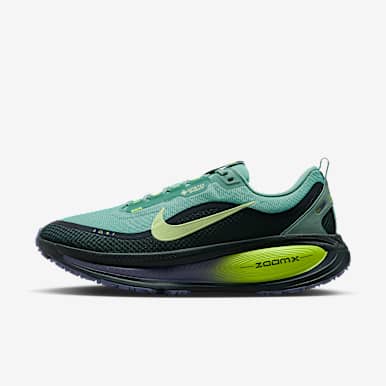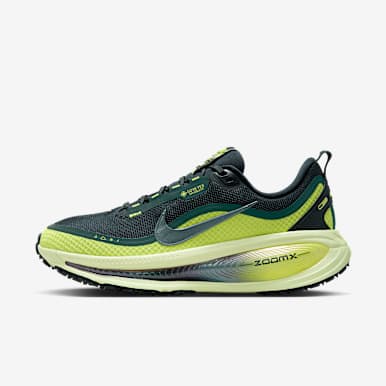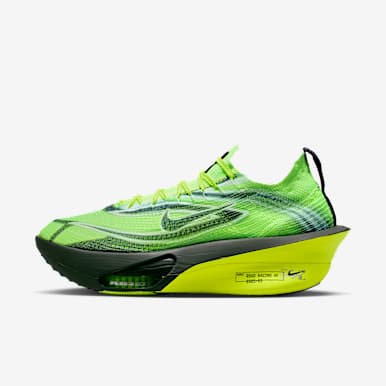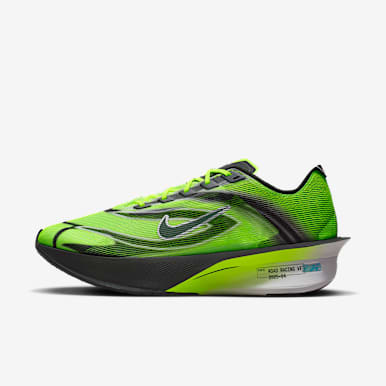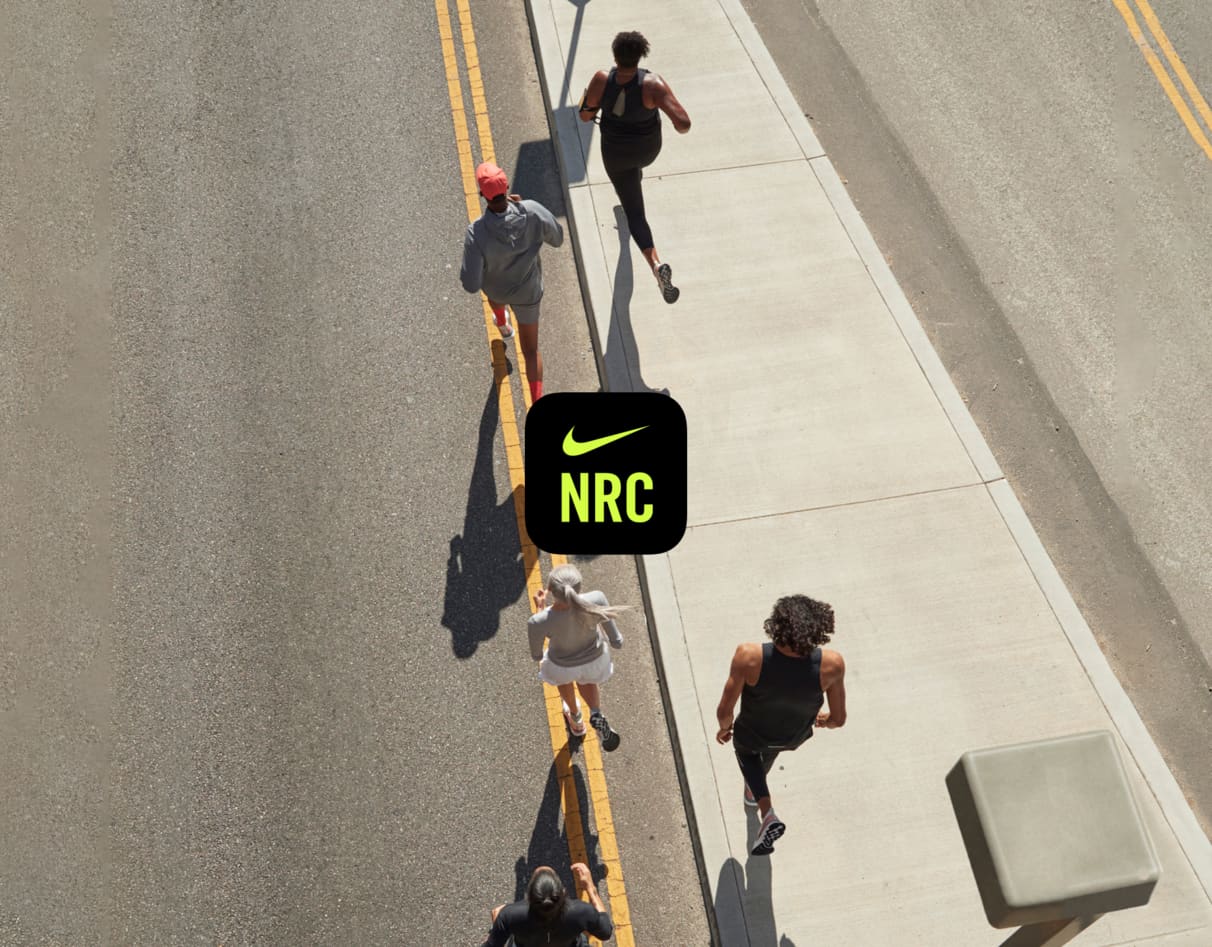3 Track Workouts Designed for All Levels
Sport & Activity
Get faster in just six weeks with these speed workouts created by a USATF-certified running coach and Nike Well Collective Trainer.

Whether you're an experienced or casual runner, an athlete training for a marathon, a consistent gym-goer, or someone who is just looking to gain a better relationship with running, track workouts can help you get faster and stronger—and can help add variety to a workout routine.
Why Are Track Workouts Important for Improving Speed?
Doing long, steady-state aerobic runs—that is, runs at a pace where you can comfortably hold a conversation—is essential for improving aerobic endurance, but engaging in workouts that are short and more challenging is equally as important.
Speed training is a form of strength training. Fast-paced running in short intervals (Think: sprint and tempo workouts) is a form of anaerobic exercise that recruits fast-twitch muscle fibres, which help generate short bursts of energy. Anaerobic training taps into your body's ability to break down carbs in the absence of oxygen.
Improving your anaerobic capacity boosts your muscles' threshold for fatigue—making track or speed workouts a great way to get stronger.
Because track workouts usually entail short, intense bouts of running, each interval is followed by a generous rest period to allow for ample recovery before your next interval. Taking that rest helps you maintain a consistent effort throughout the duration of the workout. In many ways, speed work mimics HIIT training, since track workouts are often segmented into work/rest blocks.
How To Determine Your Running Pace
For each workout, you will determine pace using a rate of perceived exertion, or RPE, scale of one to 10—one being the easiest and 10 being maximal effort.
Not only can running based on how you feel help make running more enjoyable and sustainable, it can allow you to tune into how your body is feeling mid-workout. You can even detect day-to-day changes your body may experience due to stress, fatigue and the weather. Recording notes on a daily basis in a journal can help you keep track of your workouts, effort and recovery—all of which can be helpful to refer back to as you progress through your training cycle.
For example, what feels like a seven out of 10 effort today may feel like a nine out of 10 effort tomorrow. Similarly, what felt like a nine out of 10 several weeks ago (before you started training) may now feel like a seven out of 10.
If you are familiar with your paces, or have run a race recently, consider employing some of these suggested paces on the track:
- 9 RPE corresponds to your 1 mile race pace.
- 8 RPE corresponds to your 5K race pace.
- 7 RPE corresponds to your 10K race pace.
- 6 RPE corresponds to your tempo pace.
- Anything below 6 RPE corresponds to your aerobic endurance training, also known as your conversational pace.
(Related: Experts Say This Is the Top Recovery Drink To Have After a Workout)
Getting Faster Requires Consistency
Incorporating one of the three track workouts listed below into your current training cycle can help you improve your speed. For best results, supplement your track workouts with one to two slower conversational-paced aerobic runs and one to two strength-training sessions each week, and prioritise high-quality foods, adequate sleep, stretching, foam rolling and other forms of muscular recovery.
Success comes with structure. That's why each workout strategically increases in volume (or, how many miles you run each session) and does so incrementally in two-week blocks over the course of six weeks.
Don't have access to a track? Make the world your track. Find an enclosed space like a local park, a football pitch, or closed-off streets so you can run fast without having to worry about traffic. Then, use a running watch or the Nike Run Club App on your phone to track your distance. Or, just estimate the distance—every workout has an estimated duration for each interval length.
What To Expect With Each Workout
Remember, all three of the workouts below are scalable for all levels and progresses in two-week blocks over six weeks.
Regardless of your experience, performing just one speed workout each week can make a difference. With that in mind, if you are already running regularly, training for a half or full marathon, or just want to spend the next six-week block focusing on speed development, then you can plug two of the below workouts into your weekly routine. Just be sure to give yourself at least a day of rest between speed workouts.
If you are newer to speed training, or running in general, consider making the first option below the workout you try to master over the next six weeks. Workouts two and three are a bit more challenging and are tailored for intermediate and advanced runners.
Bear in mind that speed workouts are more demanding on your body than easy jogs or runs, so it's important for your body to recover. Adaptations from training come with adequate recovery.
Try to keep each interval around the same effort and pace. If you went too hard on the first one, take note and take it easy for the remaining intervals. Use the rest periods to stop running and let your body recover. Holding a consistent pace and effort during each interval is key. Your effort may feel more challenging late in your workout, but you should still be running in a controlled fashion and at the same duration and pace as your first interval. You are your own co-coach so you can always up the rest as you need.
To get the most out of your speed workouts, they should be supplemented with a weekly strength-training session and easy and long runs conducted at conversational pace throughout the week.
Complete This Standard Warm-Up Routine Before Getting Started
Start each session with a five- to 10-minute jog in order to promote circulation to your joints and tissues. Then, perform the seven-part dynamic warm-up listed below. Use these mobility exercises to prime your joints and the activation exercises and running technique drills to increase the rate your muscles can contract and create force. Start at a conversational-pace jog for five to 10 minutes.
- Hamstring scoop to knee hug: 5 reps on each leg before switching legs
- Quad pull to reverse lunge: 5 reps on each leg before switching legs
- Hip CARs (controlled articular rotations): 5 reps on each leg before switching legs
- Single-leg standing clamshells: 10 reps on each leg before switching legs
- Single-leg controlled landing: 5 reps on each leg before switching legs
- Pogo hops: 20 hops
- A-skips: 20–30 seconds, alternating sides
Once you've completed your warm-up, change into your speed shoes (if you have them) and get ready to run fast.
The Workouts
1.200-Metre Repeat Building Blocks
This workout is designed for anyone newer to track or speed workouts, since the intervals are shorter, but it is also a great option if you're a runner who's looking to refine your speed. This workout is supportive for a wide range of runners, whether they're training for a short- or long-distance race.
- Weeks 1 & 2:
- 6–8 x 200 metres (a half-lap around a traditional track) at 8, or a run of about 45–60 seconds, without a track.
- Rest 90 seconds to two minutes to recover between intervals.
- Weeks 3 & 4:
- 8–10 x 200 metres at 8 RPE, or a run of about 45–60 seconds without a track.
- Rest 90 seconds to two minutes to recover between intervals.
- Weeks 5 & 6:
- 10–12 x 200 metres at 8 RPE, or a run of about 45–60 seconds without a track.
- Rest 90 seconds to two minutes to recover between intervals.
- Weeks 1 & 2:
2.Speed Endurance Intervals
You'll get to work on both your speed and endurance with these intervals, which start out longer and then get shorter (and faster) as you progress. The objective is to test your ability to run fast for extended periods of time.
- Weeks 1 & 2:
- 2 x 800 metres (two laps around a traditional track) at 7 RPE, rest two minutes after each interval, (or a run of about three to four minutes without a track).
- 2 x 400 metres (one lap around a traditional track) at 7 RPE, rest 90 seconds after each interval, (or a run of about 90 seconds to two minutes without a track).
- 2 x 200 metres (half lap around a traditional track) at 9 RPE, rest 90 seconds after each interval, (or a run of about 45–60 seconds without a track).
- Weeks 3 & 4:
- 2 x 800 metres at 7 RPE, rest two minutes after each interval.
- 4 x 400 metres at 7 RPE, rest 90 seconds after each interval.
- 4 x 200 metres at 9 RPE, rest 90 seconds after each interval.
- Weeks 5 & 6:
- 3 x 800 metres at 7 RPE, rest two minutes after each interval.
- 5 x 400 metres at 7 RPE, rest 90 seconds after each interval.
- 5 x 200 metres at 9 RPE, rest 90 seconds after each interval.
- Weeks 1 & 2:
3.Track Fartlek (Speed Play)
This workout is similar to the 200-metre repeat building blocks workout, but instead of stopping during the rest period, you jog half of a lap during that recovery window. Active recovery can help you get stronger and faster as it prompts you to shift gears between different speeds and efforts.
- Weeks 1 & 2:
- 2 x 1,200 metres (three laps around a traditional track) alternating between fast and casual recovery jog every 200 metres (half lap).
Use the casual effort to allow your body and heart rate to recover. After completing your first 1,200-metre interval, rest for three to five minutes before starting your next interval.
Option: If you don't have access to a track, run for six minutes alternating between 7 RPE and 4 RPE every other minute.
- Weeks 3 & 4:
- 3 x 1,200 metres alternating between fast and casual recovery efforts every 200 metres.
Use the casual effort to allow your body and heart rate to recover. Rest for three to five minutes between each 1,200-metre interval.
Option: If you don't have access to a track, run for six minutes alternating between 7 RPE and 4 RPE every other minute.
- Weeks 5 & 6:
- 3 x 1,600 metres (four laps around a traditional track) alternating between fast and casual recovery efforts every 200 metres.
Use the casual effort to allow your body and heart rate to recover. Rest for three to five minutes between each 1,600-metre interval.
Option: If you don't have access to a track, run for eight minutes alternating between 7 RPE and 4 RPE every other minute.
- Weeks 1 & 2:
Complete This Cooldown Routine After Finishing Any of Above Workouts
Congrats on completing your Speed Run. Now it's time to let your body recover. Take a light, five- to 10-minute jog, and then do some static stretches or Yoga poses (like Cobra pose or Downward-Facing Dog)—bonus points if you foam roll.
Words by Darren Tomasso, Nike Well Collective Trainer, NASM-PES and USATF-certified running coach


